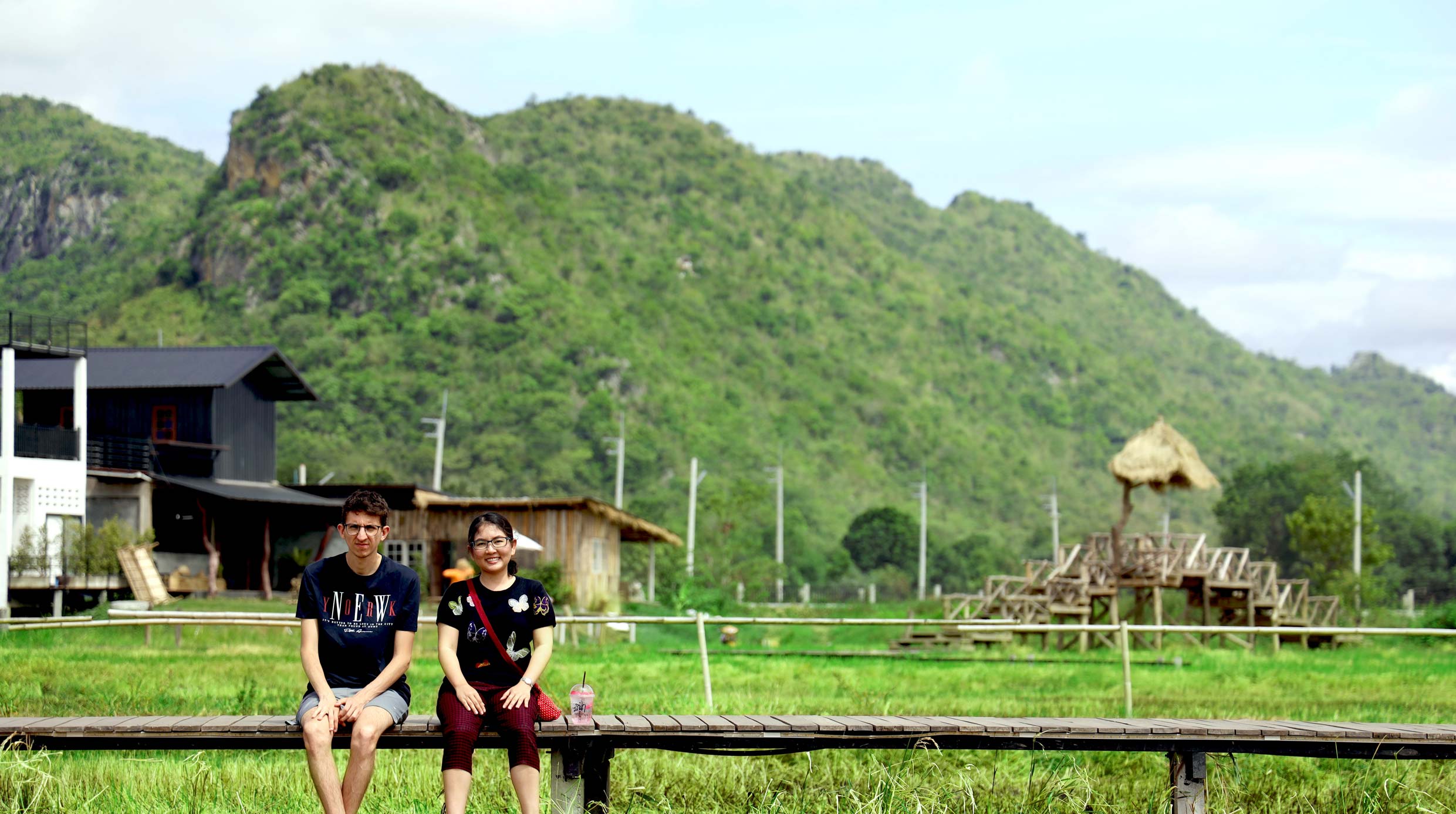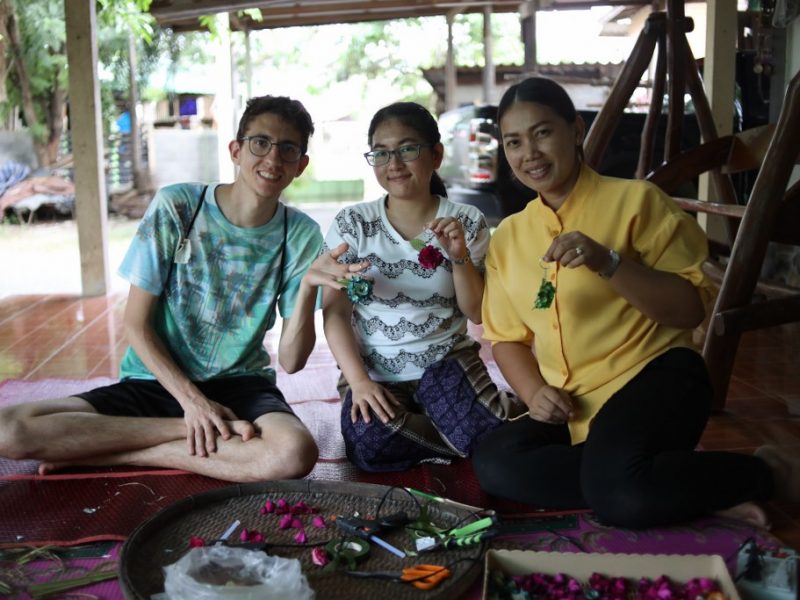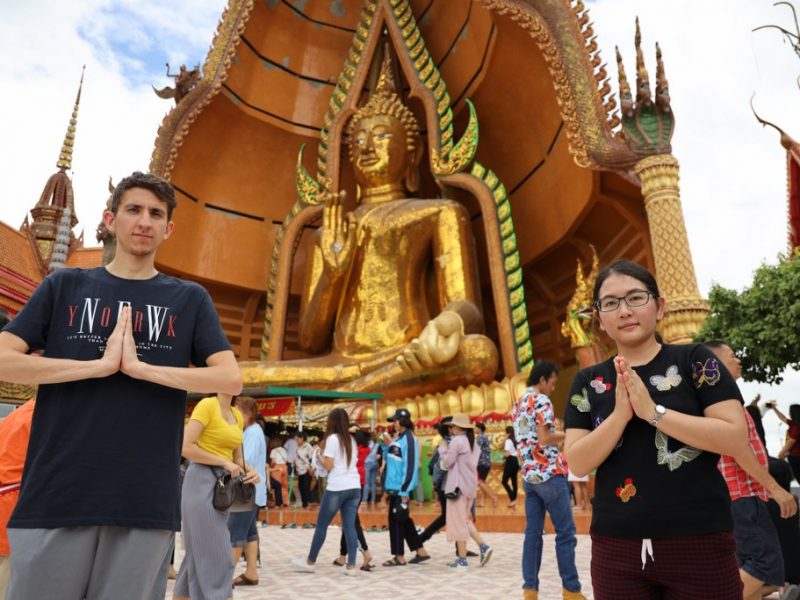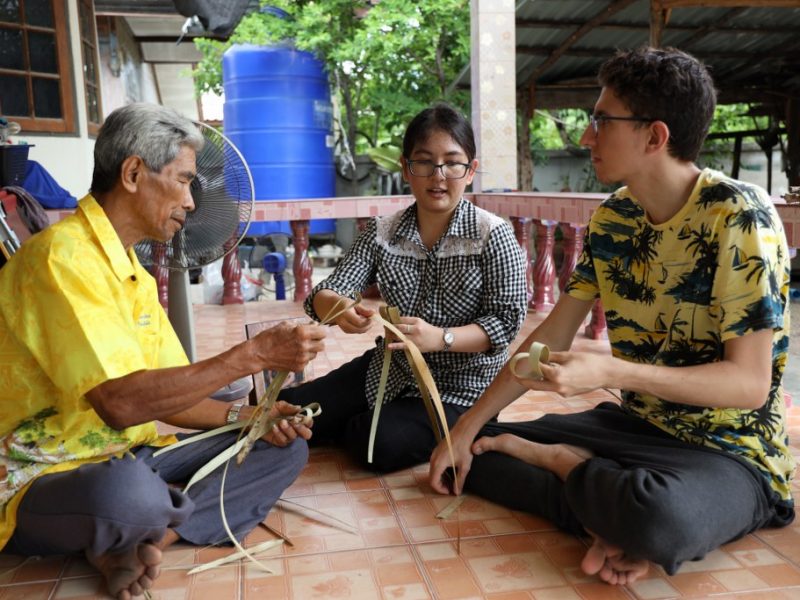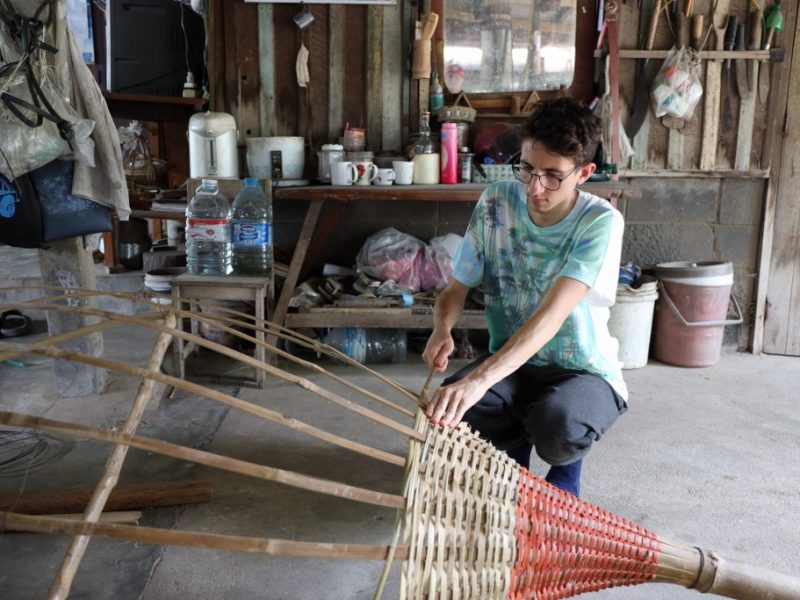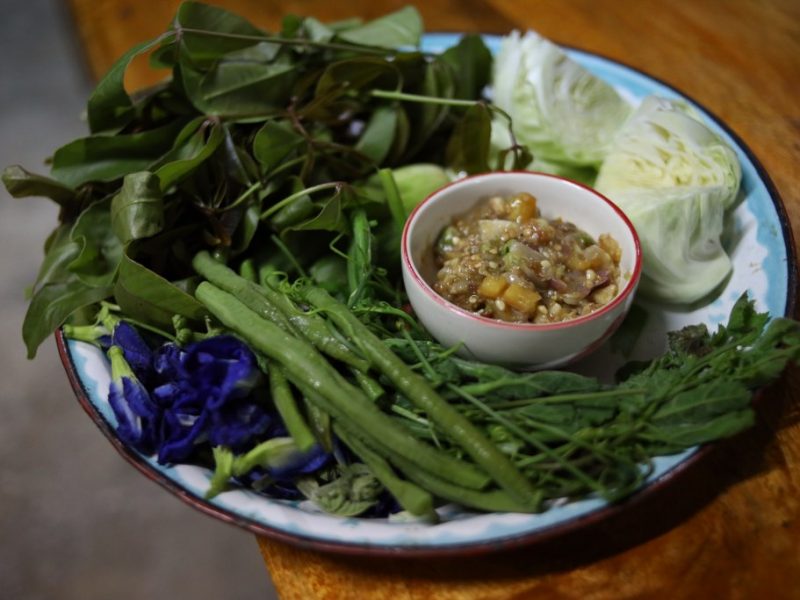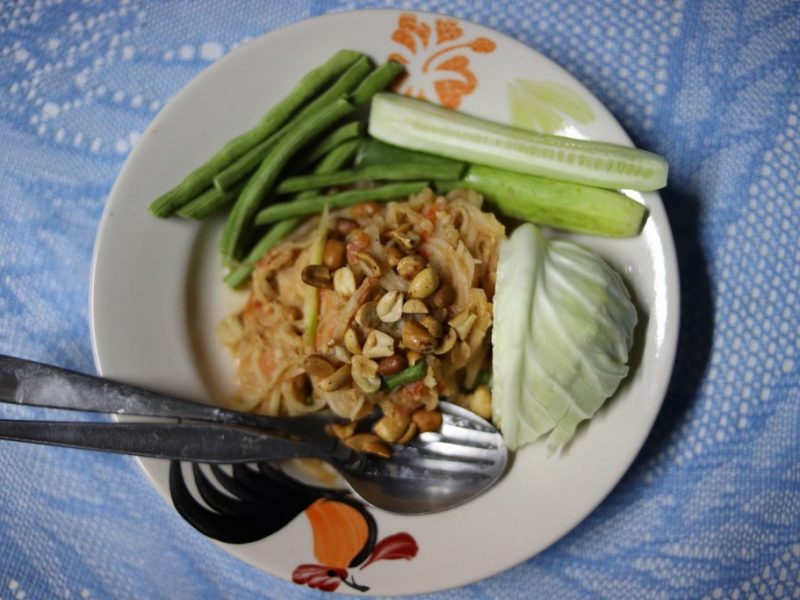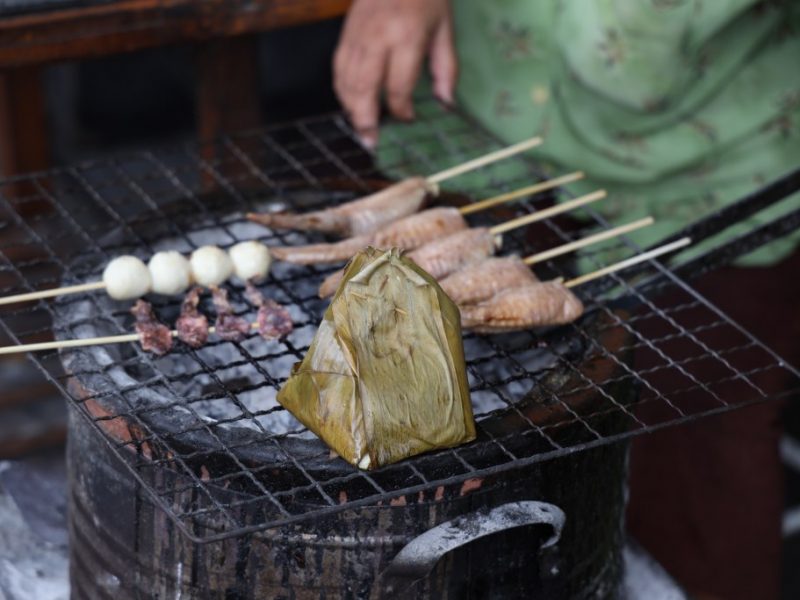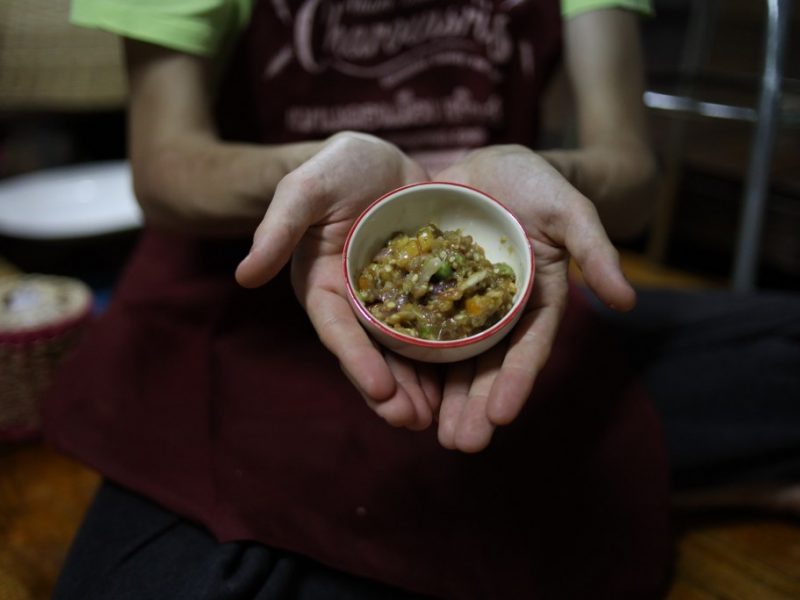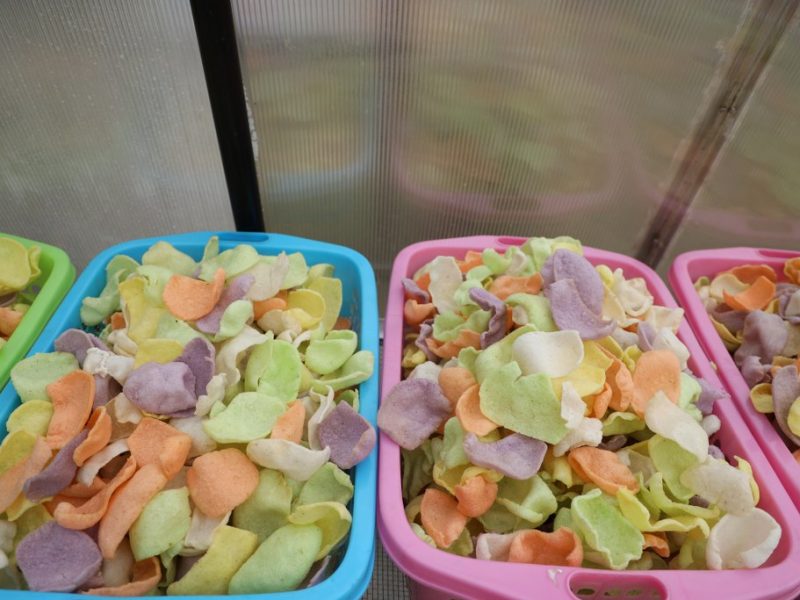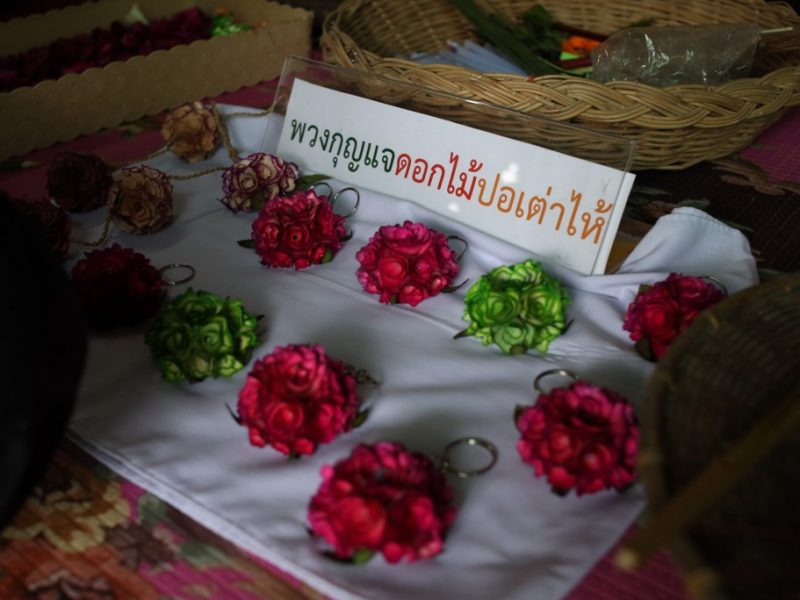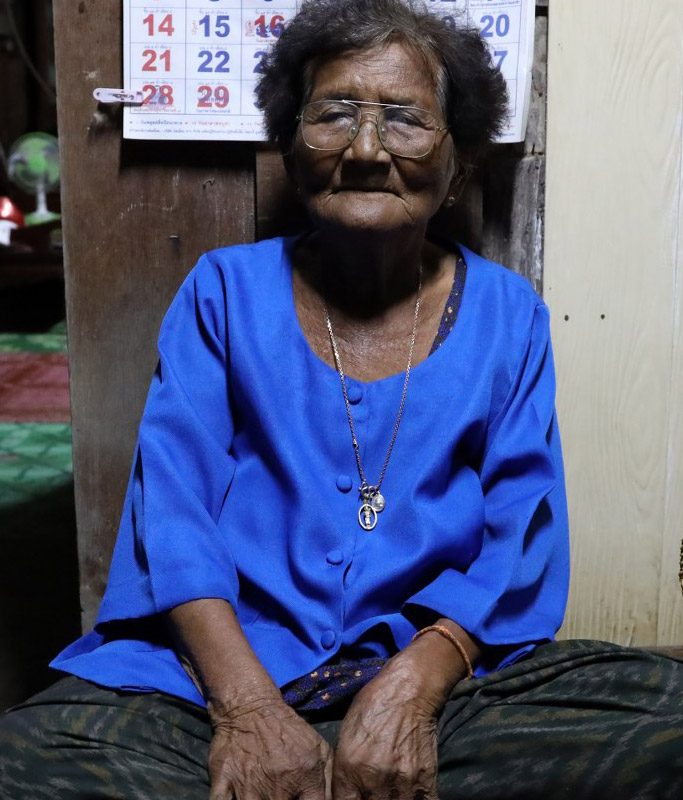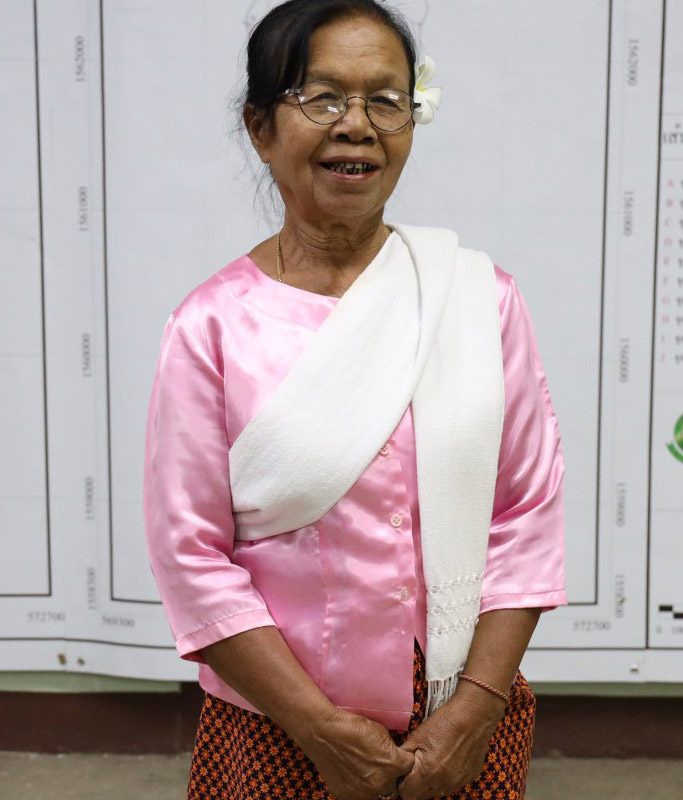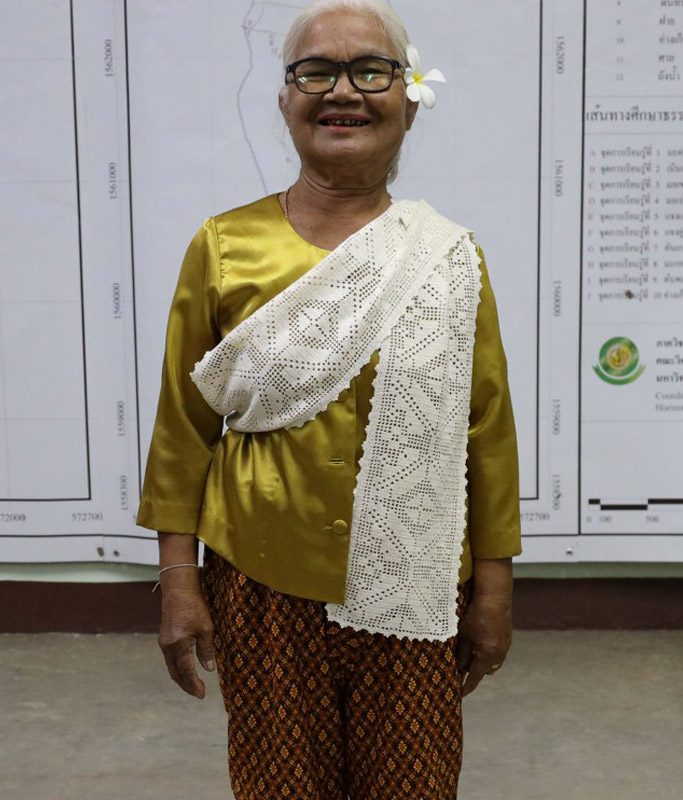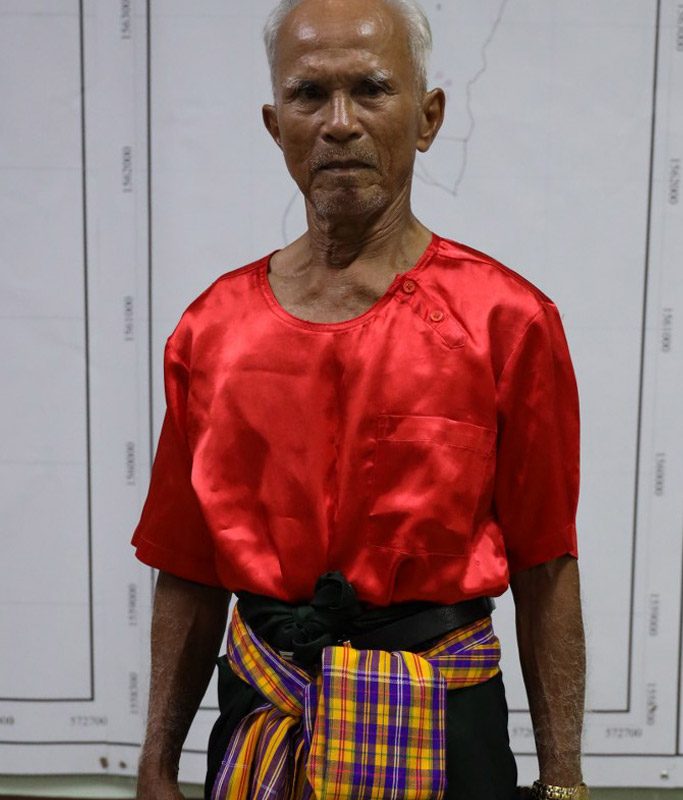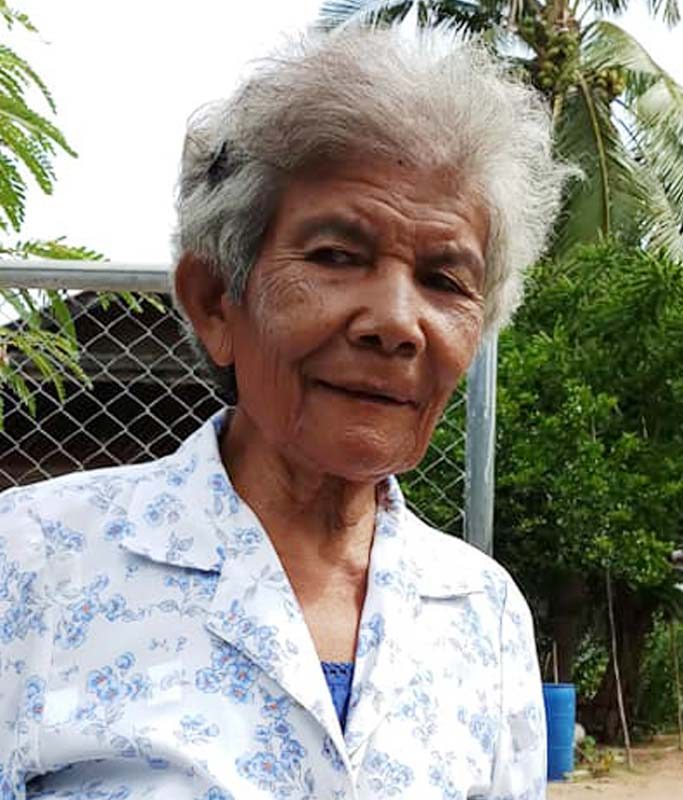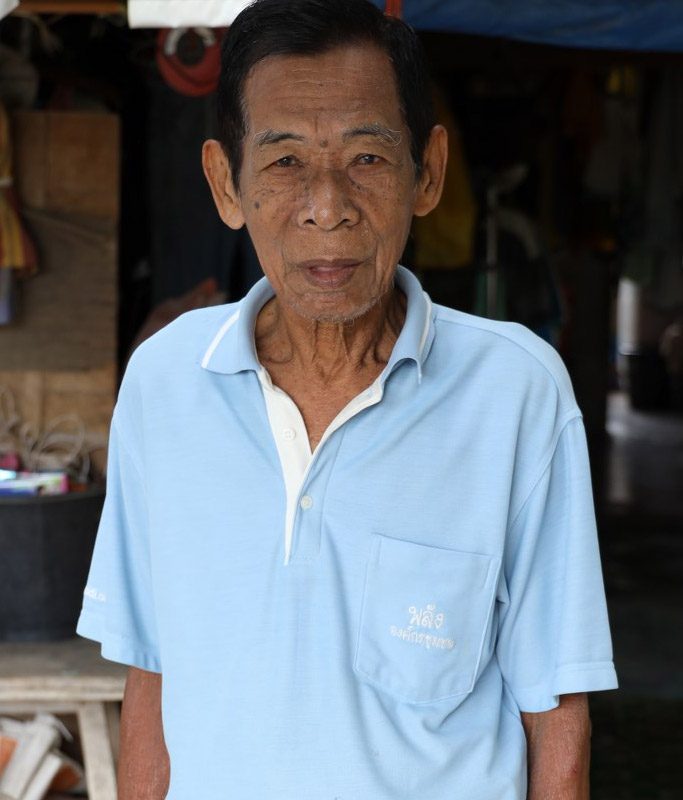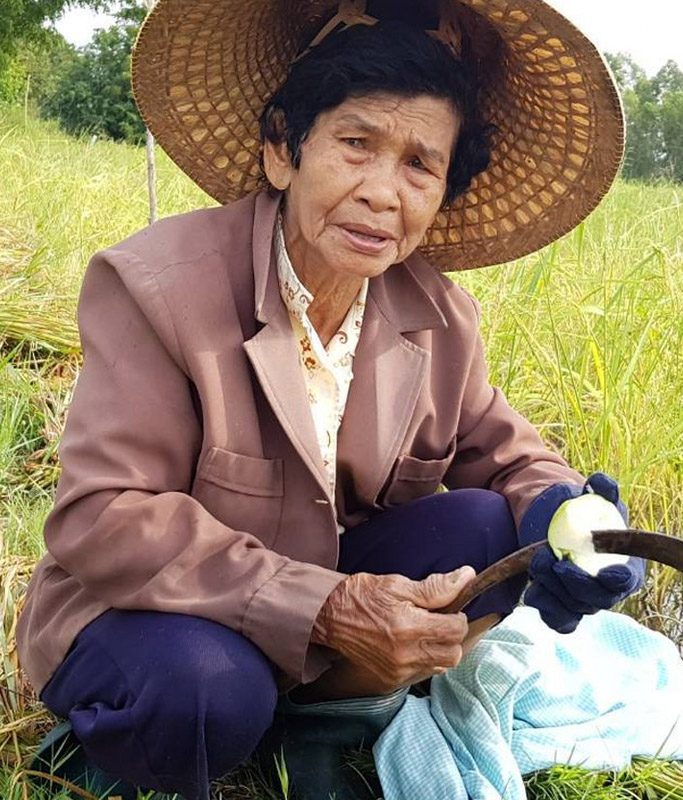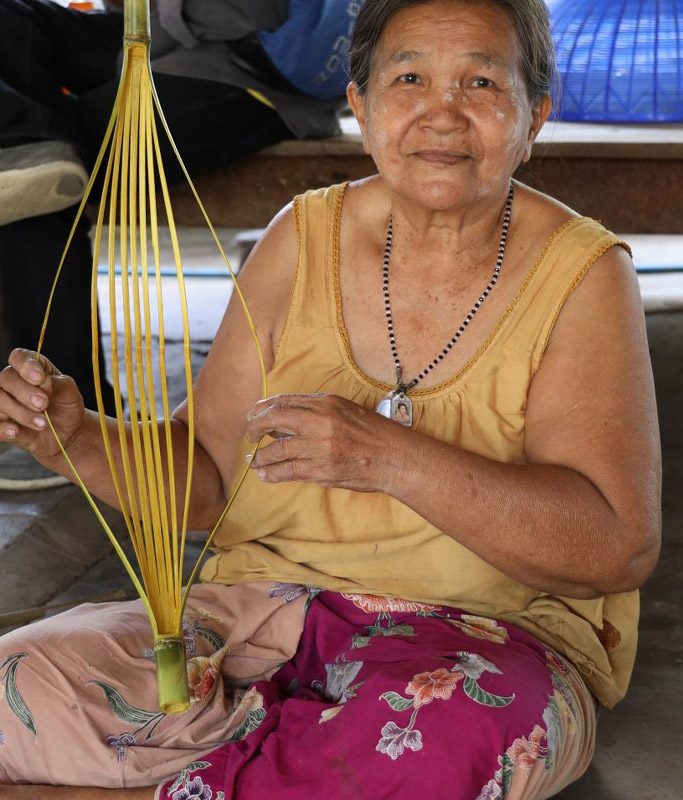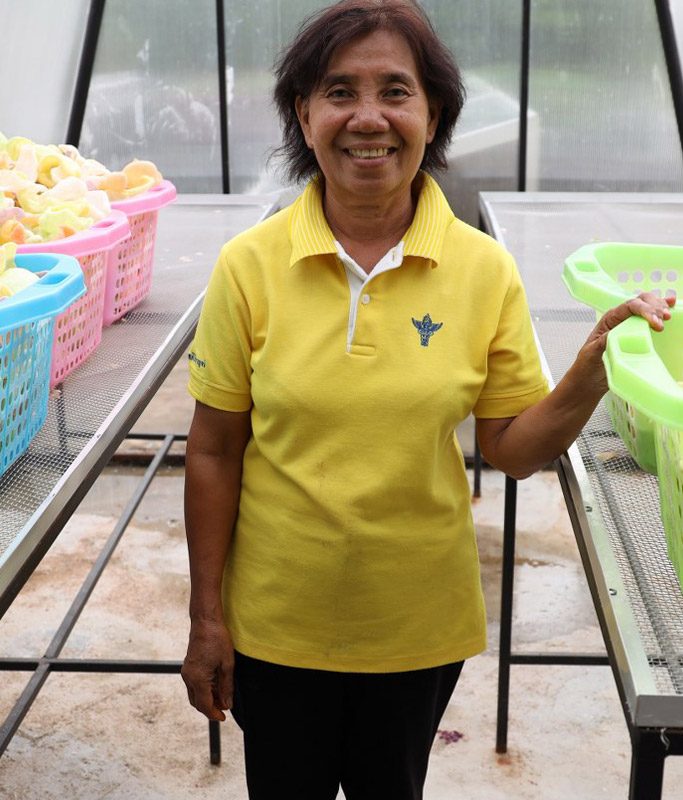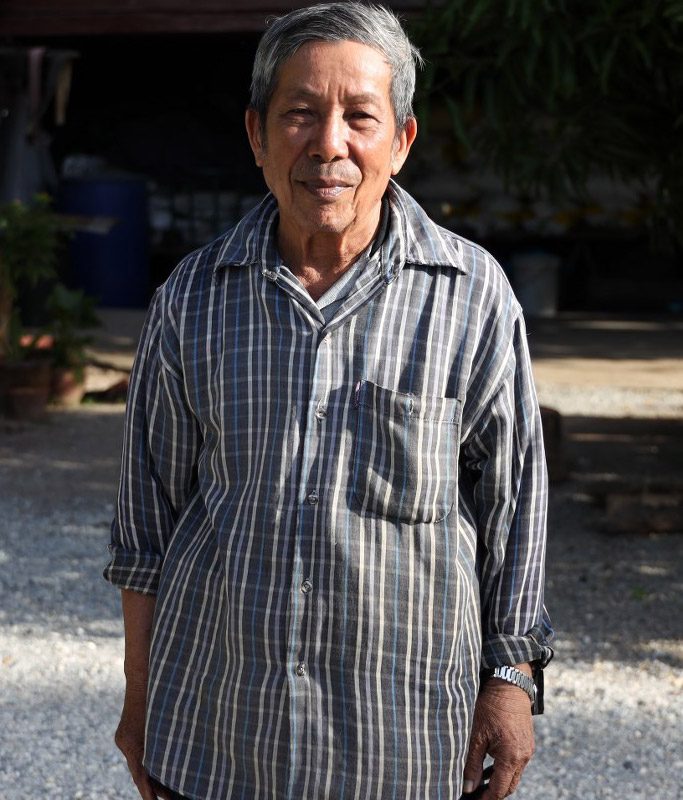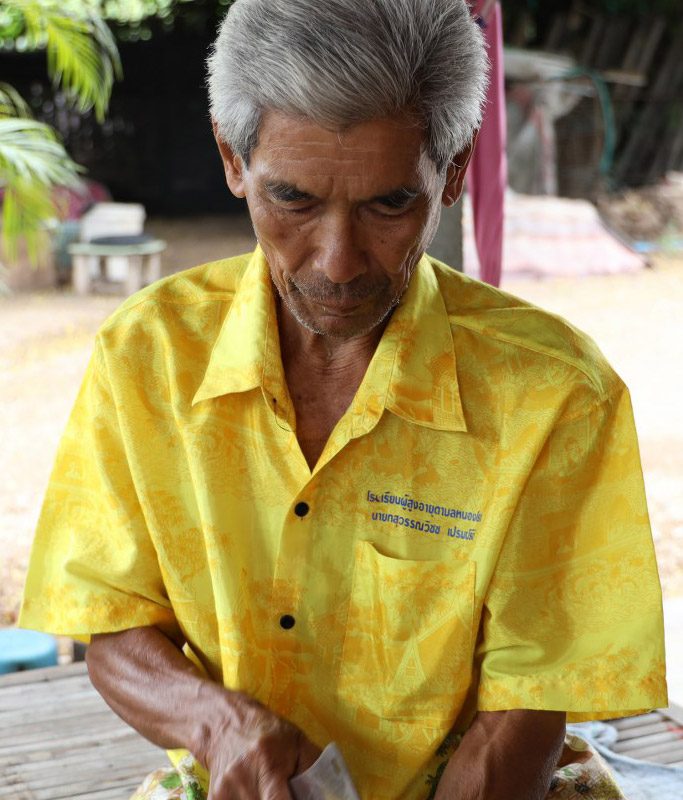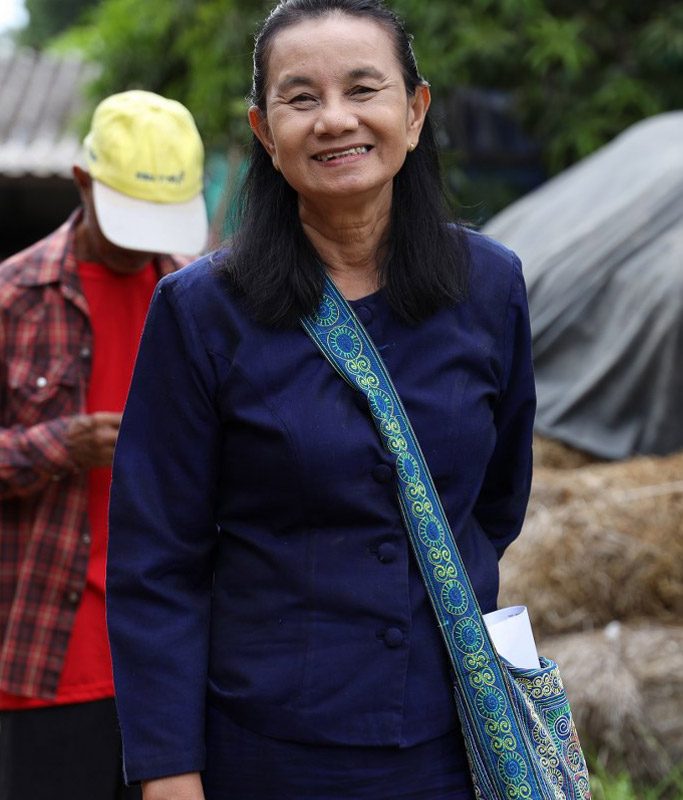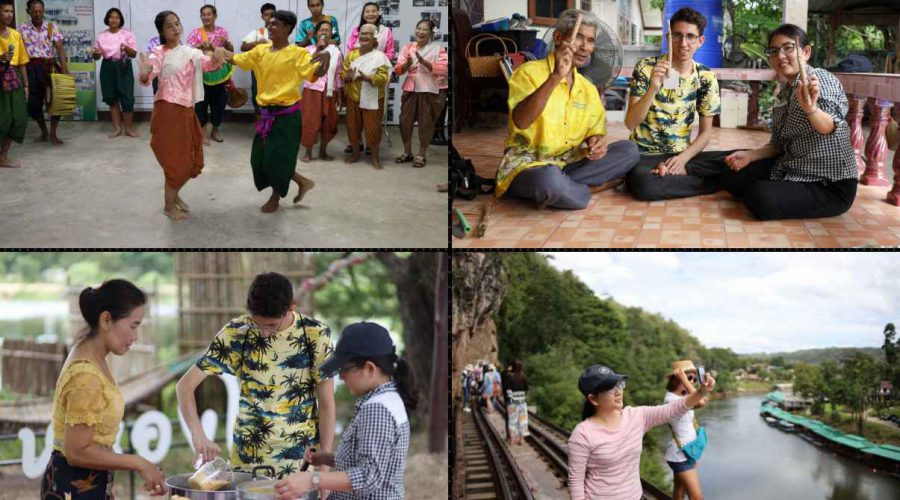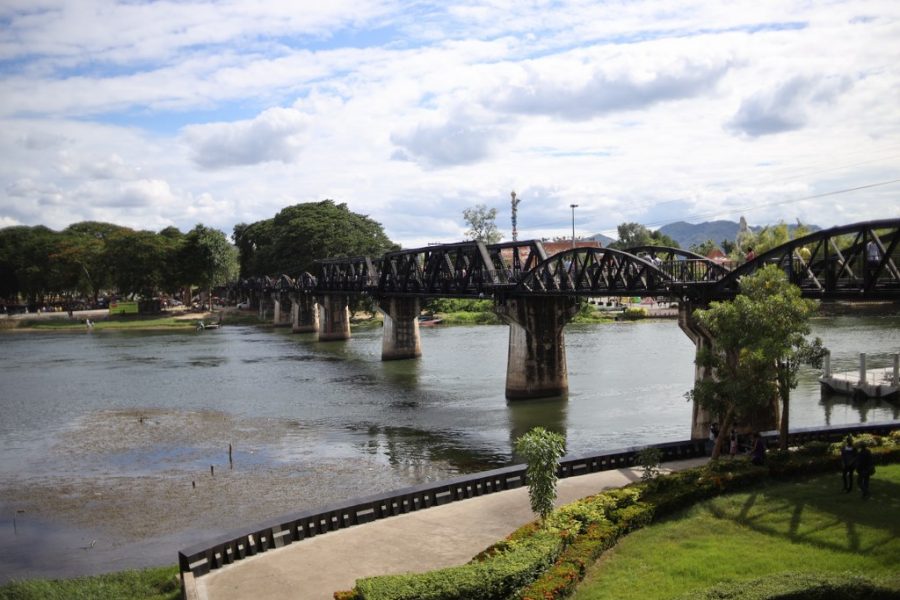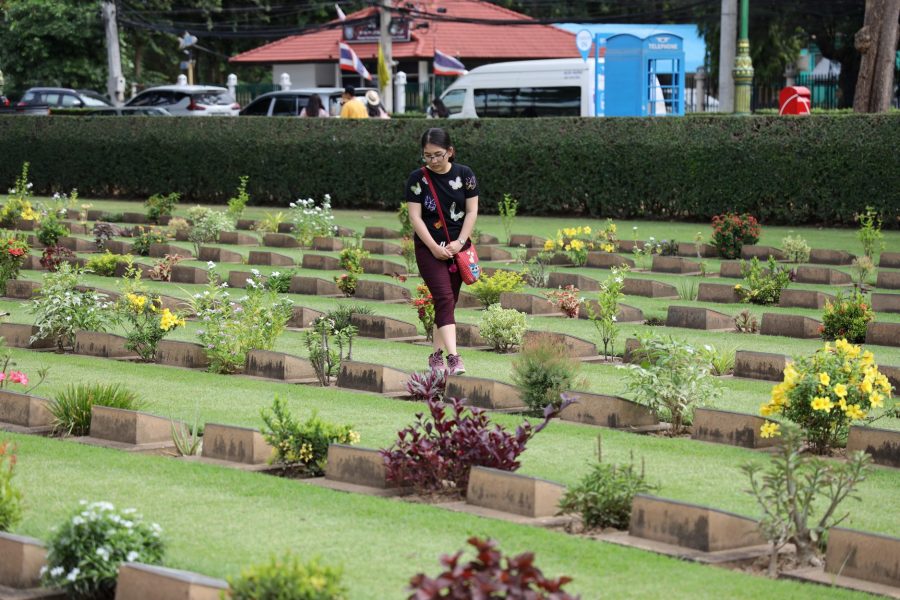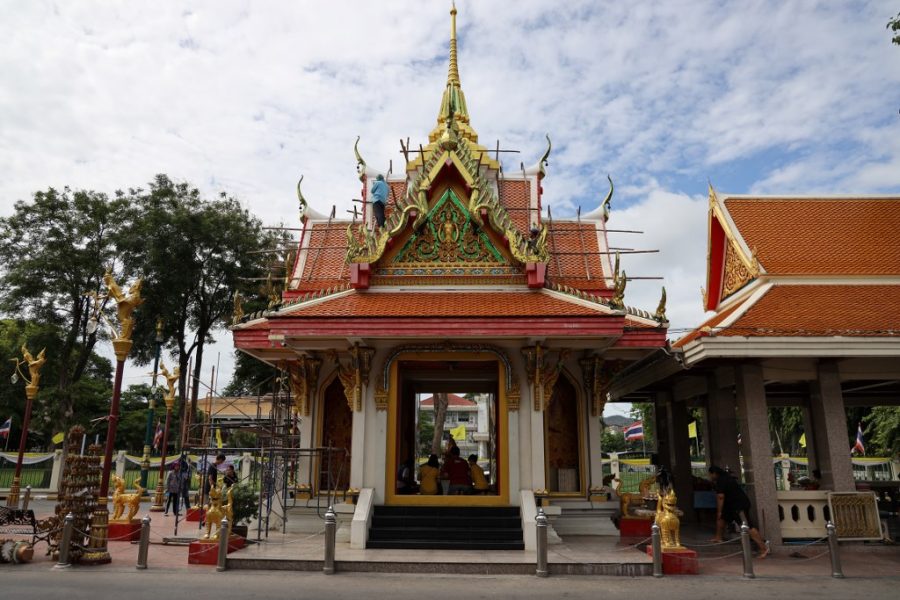| Day 1 |
| 11.00 am |
Meet at the designated meeting point and travel to Kanchanaburi. |
| 12.00 pm |
Lunch break |
| 1.00 pm |
Continue the journey towards Kanchanaburi. |
| 2.30 pm |
Stop at Kanchanaburi City Pillar Shrine to pray for good luck. Visit the Old City Wall behind the shrine and stroll through Pak Praek community, the oldest community in Kanchanaburi where the charms of old houses are still preserved. |
| 3.00 pm |
Travel to Nong Rong sub-district community, Panomtuan district. |
| 3.30 pm |
Arrive at the community. Get to know the community representatives and store your luggage at the accommodation. |
| 6.00 pm |
Enjoy dinner at the homestay accommodation and some leisure time for the rest of the evening. |
| Day 2 |
| 7.00 am |
Wake up early to make merit and experience the Buddhist lifestyle with your host at Huay Sapan Temple, an old temple built in the early-Rattanakosin period. The temple’s old church has a beautiful architectural style with plaster sculptures on both pediments and the main Buddha image called Buddha Kodom. |
| 9.00 am |
Learn about the community forest from the community master, who will guide you through the forest area taken care by the locals and is now a source of food and revenue for the community members. Collect cocculus and enkleia siamensis as you go, which are creating products that bring revenue to the community.
- Learn how to knit cocculus rings and bracelets from an expert master.
- Visit a late-Ayudhaya church and explore the impressive Khao Jam Seen Temple.
|
| 12.30 pm |
Lunch |
| 2.00 pm |
Learn to transform enkleia siamensis collected from the community forest earlier into products like key chains and decorative flowers using various colors to make them livelier. |
| 4.00 pm |
Enjoy leisure time. |
| 6.00 pm |
Cook up some local dishes with your host and have dinner together at the homestay. |
| Day 3 |
| 8.00 am |
Breakfast at the homestay |
| 9.00 am |
Visit the toddy palm processing center. This is a common plant found in the Nong Rong community that has many benefits. Every part of the plant, from the leaves to the dry seeds, can be used.
- Learn about the properties of the palm fruit and the benefits of the plant itself.
- Learn how different parts are transformed into products.
|
| 12.00 pm |
Lunch |
| 1.00 pm |
Learn to make sugarpalm cake, one of many the food products that can be made from the plant. The entire process is taught by expert, from the first mixing step until it transforms into the final yellow cake sold in markets. Make your own cake and taste it fresh off the stove. |
| 3.00 pm |
Make home decoration products from toddy palm using the leftover or unused parts like the fiber and the fruit. Add value to the material and bring revenue to the community by creating products like pencil cases and toddy palm charcoal. |
| 6.00 pm |
Dinner at the homestay accommodation |
| Day 4 |
| 8.00 am |
Breakfast at the homestay |
| 9.30 am |
Pick up more valuable local knowledge and skills as you try weaving bamboo cradles, adapted from mats. The cradles are sized according to the market demand, ranging from person-sized ones to key chains to fruit baskets. Learn from the master who will be happy to share his expert knowledge. |
| 12.00 pm |
Lunch |
| 1.00 pm |
Make fat-free pork crackling, one of the main products that brings revenue to the community members outside of farming. Learn from the master who will teach you how to choose the right type of skin, clean it, marinade and fry to perfection. |
| 3.00 pm |
Get to know more about rice crackers, another popular local product, especially the rainbow rice variety that’s colored with natural materials and sold all over the local the area. As the production cost has been reduced, revenue is up for the community. Learn how to make them, as well as the coloring technique. |
| 6.00 pm |
Dinner at the accommodation |
| Day 5 |
| 8.00 am |
Breakfast at the homestay |
| 9.00 am |
Visit Masuk Garden and learn about integrated farming with different plantation, including papaya, long peppers and carissa carandas.
- Experiment with making carissa carandas juice. Learn the entire process from selecting the fruit to making the juice – and of course taste your self-made product at the end.
|
| 12.00 pm |
Lunch |
| 1.00 pm |
Learn how to weave a ‘snake’ for treating trigger finger, a common syndrome among office workers under the guidance of a local expert. |
| 3.00 pm |
Learn to weave hats from coconut leaves, transforming local materials into a value-added product. |
| 6.00 pm |
Dinner at the accommodation |
| Day 6 |
| 8.00 am |
Breakfast at the homestay |
| 9.00 am |
Say goodbye to the community and travel to Erawan waterfall.
The very well-known Erawan waterfall is located in Erawan National Park. Being a limestone waterfall, the water appears turquoise when the sunlight shines onto the surface. There are 7 tiers in total, and the distance between the lowest and the highest is 1,500 meters. It flows all year round, although you can expect much less water during the dry season from December to April. The water flows downstream to River Kwai Yai near the national park office. |
| 1.00 pm |
Lunch |
| 2.00 pm |
Travel to Kanchanaburi. |
| 3.30 pm |
Check-in at the accommodation. |
| 6.00 pm |
Dinner and leisurely time |
| Day 7 |
| 8.00 am |
Breakfast at the hotel |
| 9.30 am |
Visit Don Rak War Cemetery, also known as the United Nations War Cemetery or “The British Cemetery” to the locals – home to over 6,000 Prisoner of War (POW) graves. |
| 10.00 am |
Admire the famous Bridge Over the River Kwai. The bridge, which you can now walk across, which goes over the River ‘Kwai Yai’ and boasts a semi-circular iron structure and truss, supported by reinforced concrete pillars. It is currently part of the Thonburi-Namtok railway and used to be part of the Death Railway itself. |
| 12.00 pm |
Lunch |
| 1.00 pm |
Stop at Meena Café, a coffee shop with a casual vibe, to taste some coffee and take in the fresh air in the middle of the green field to refresh before heading back. |
| 2.30 pm |
Travel back to Bangkok via highway. |
| 5.30 pm |
Safely arrive back in Bangkok to end the trip. |



